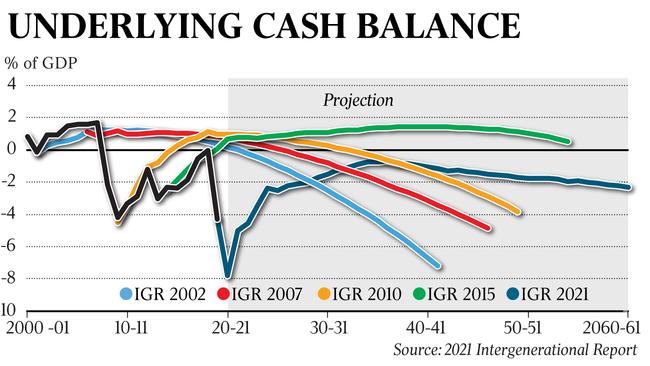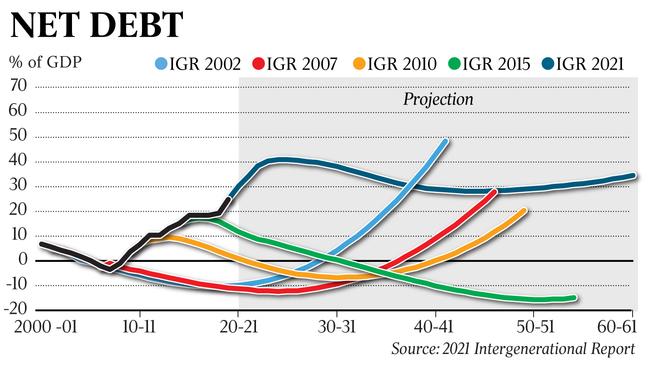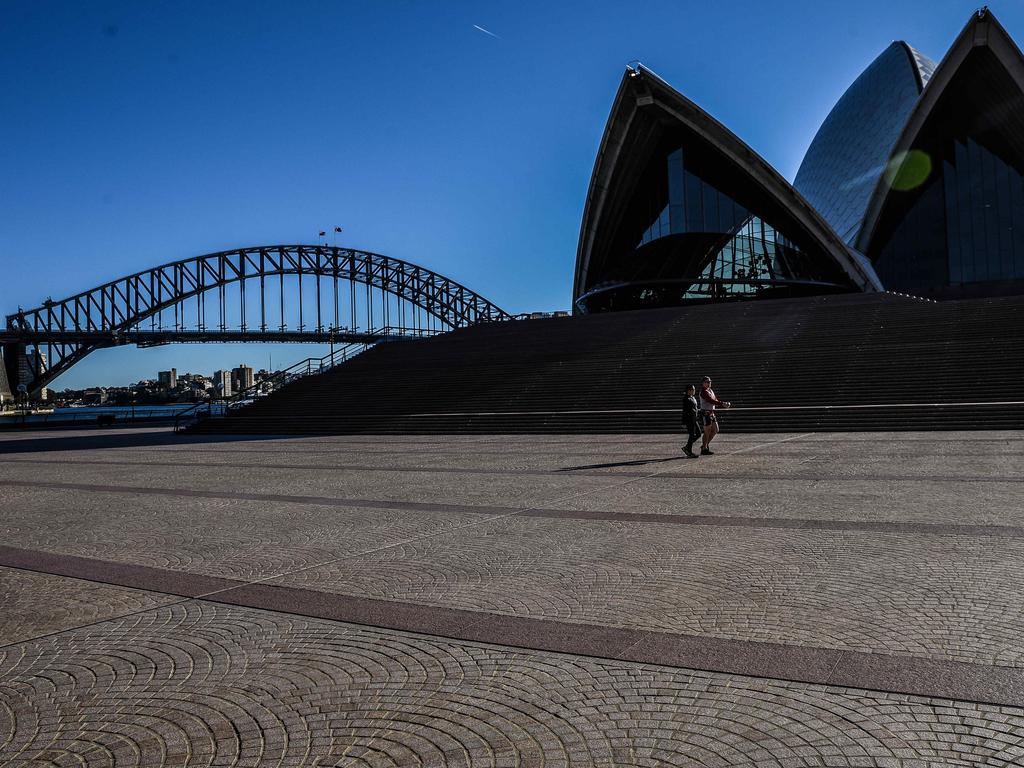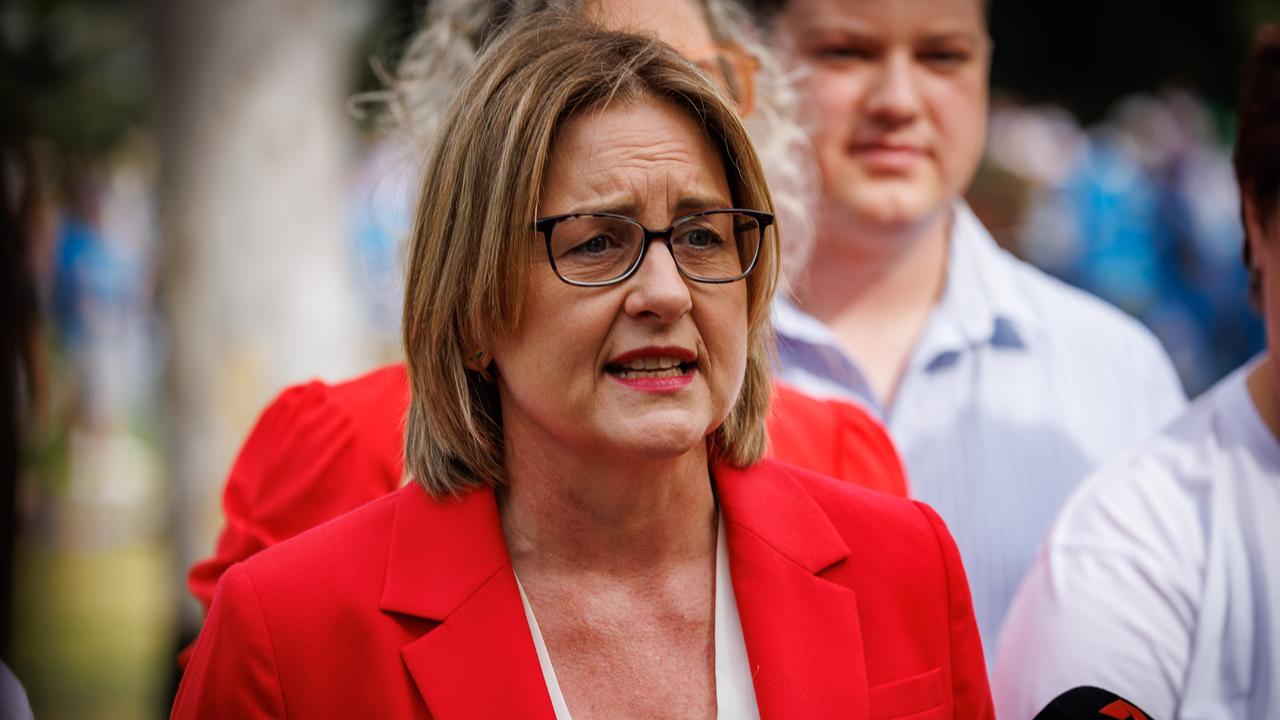Australia’s population to shrink over next 40 years, budget deficit for decades
The population will shrink for the next 40 years, as the nation’s finances stay in the red, a grim intergenerational report warns.

Australia’s fertility rate is expected to fall dramatically over the next 40 years leading to a long-term population problem without a return to strong migration, while the nation’s finances are expected to remain in the red for decades to come as the country struggles to recover from the “profound” and long-term impacts of Covid-19.
The fifth Intergenerational Report paints a bleak and deteriorating picture of Australia into the second half of the century with the legacy of the pandemic delivering a fiscal crunch courtesy of a smaller and older population that will undercut the size of the economy amid ballooning health and aged-care costs.
The Australian can confirm that new forecasts predict a falling birthrate that will remain well below the replacement rate required to keep the population stable into the second half of the century when a generational clash is set to hit the economy.
The report forecasts declining fertility will be driven by women having children later in life and “having fewer children than women before them at the same age”. The long-term fertility rate is expected to decline to 1.62 babies per woman by 2031, where it will remain until 2060-61, a fall from the 2015 forecast of 1.9 babies over a 35-year average.
The report, to be handed down by Josh Frydenberg, also shows the nation will grow older with life expectancy to increase – although not as much as forecast five years ago – from 80.9 years for men and 85 years for women in 2018, to 86.8 years for men and 89.3 years for women by 2061.

The IGR – delayed by a year due to the pandemic – will show that the population will reach 38.8 million in 2060-61, against almost 40 million by 2054-55 in the 2015 version – the first downward revision in the history of the documents. The Covid-19 recession will also result in the economy being 5 per cent smaller by 2030 than it would have otherwise been, based on pre-pandemic budget forecasts.
The IGR will pile pressure on the current and future governments to act swiftly to lift growth and contain spending, particularly the rapid growth in healthcare costs which will account for 26 per cent of total commonwealth expenditure by 2061.
The IGR will highlight how 30 years ago, for each person aged over 65, there were 6.6 people of working age. Today, there are 4 working-age people, and by 2060-61, there will only be 2.7.
Spending on health per person, adjusted for inflation, is projected to more than double in the next 40 years. Aged-care spending is projected to nearly double as a share of the economy by 2060-61.

“The economic impact of Covid-19 is not short-lived,” the Treasurer will say in a speech to the Committee for Economic Development of Australia in Melbourne on Monday.
“As the IGR makes clear, it sees our population smaller and older while our debt levels are higher.
“In the absence of our Covid economic response Australia could have seen a generation of long-term unemployed leading to a significant scarring effect and serious damage to the budget.
“While the IGR confirms Australia debt position remains sustainable, fiscal discipline remains key. Growing the economy is Australia’s pathway to budget repair, not austerity or higher taxes.
“The fact we are living longer is to be welcomed. But the impacts on the economy and the budget are profound.
The dramatic increase in health and aged-care spending together with the decline in the proportion of working aged Australians creates pressures on both revenue and expenditure.
Mr Frydenberg will say that the “sobering news” contained in the IGR underlines the urgent need to make difficult choices to lift productivity and economic growth.
Tax receipts are set to reach the government’s 23.9 per cent tax-to-GDP cap by the middle of the next decade, the IGR shows.

Mr Frydenberg will also say the fiscal and economic challenges associated with a smaller and older population must be met with a “well-targeted, skills-focused migration program”.
“Over the next 40 years, the fertility rate is projected to remain well below the replacement rate of 2.1 babies per woman, which is the level required to keep the population size steady in the long term given current mortality assumptions. Australia’s fertility rate has been below the replacement rate since 1976-77,” the report says.
“The total fertility rate is forecast to fall from 1.65 babies per woman in 2019-20 to 1.58 babies per woman in 2021-22 due to economic uncertainty causing some people to delay having children. In 2023-24 the total fertility rate is assumed to temporarily rise to 1.69 babies per woman as 80 per cent of the delayed births occur, before gradually declining to 1.62 babies per woman by 2030-31.
“This previous assumption was based on a 35-year average that included a temporary period of relatively high fertility between 2004 and 2007. The current assumption is based on a 60-year analysis of the observed lifetime fertility of women born in successive years.”
The IGR outlines a daunting fiscal repair task for future governments. The 2015 document projected surpluses from 2020-21.
The new estimates show the underlying cash balance is projected to improve to a deficit of 0.7 per cent in 2036-37, supported by the strong economic recovery. But, assuming no policy changes, the deficit is then projected to widen to 2.3 per cent by 2060-61 as the effects of ageing take hold.
The 2015 IGR projected a return to surplus would allow the government to drive net debt to zero by the end of this decade. But after committing $290bn in direct fiscal support through the pandemic, the commonwealth’s net debt position is now projected to peak at 40.9 per cent of GDP in 2024-25, before falling to 28.2 per cent of GDP in 2044-45 and then increasing to 34.4 per cent of GDP by 2060-61.
After growing by 3 per cent on average over the past four decades, real GDP growth over the coming 40 years will slow to 2.6 per cent. Nominal GDP will slow from 7 per cent on average, to 5 per cent.
But per capita real GDP growth will slow only slightly, the IGR will say, from 1.6 per cent over the past 40 years, to 1.5 per cent over the next – in dollar terms, real GDP per person will almost double, from $76,700 in 2020-21 to $140,900 in 2060-61.



